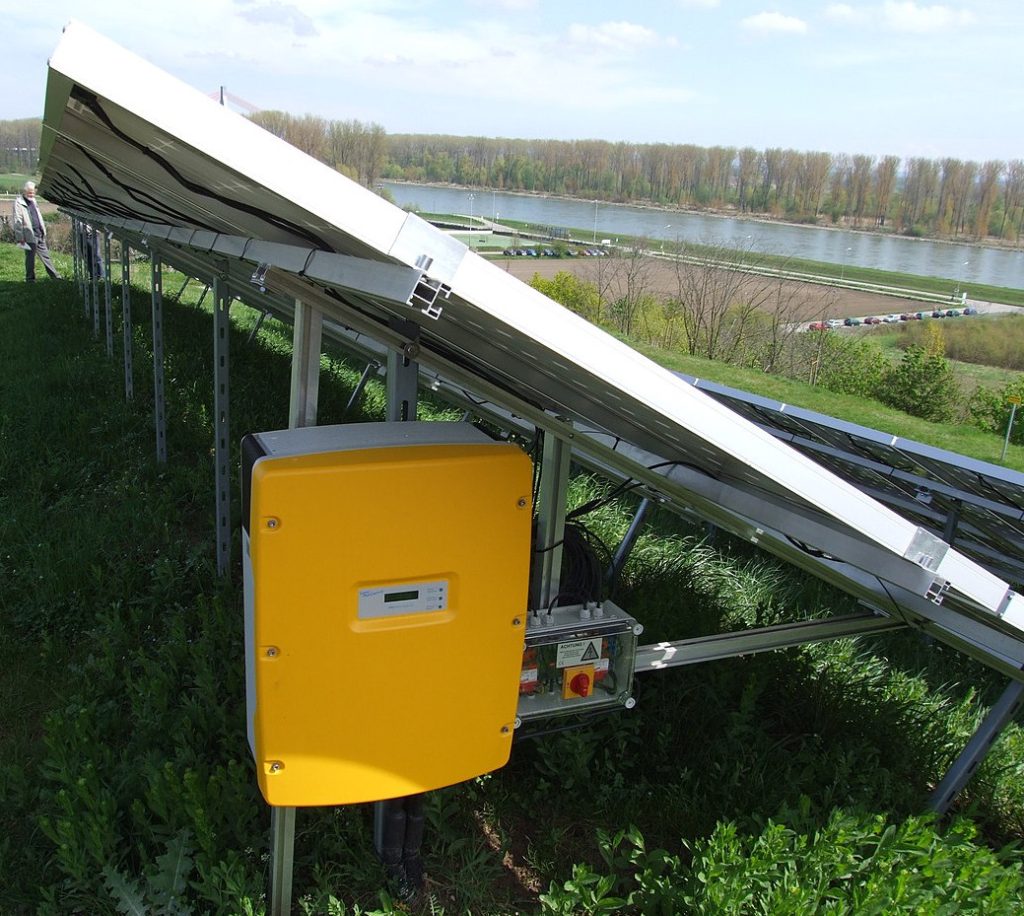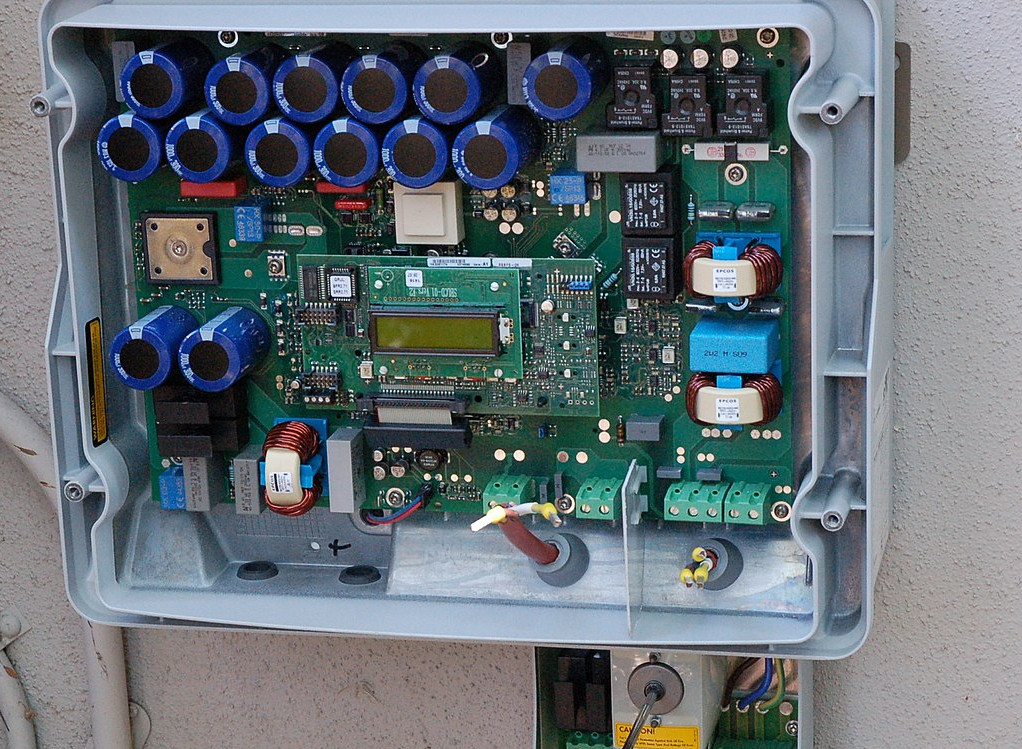Imagine a world where you can harness the power of the sun, on demand, whereever you are. Technology providing electricity wherever you go. How close are we to achieving truly portable and limitless solar power? Welcome to the future of portable Solar Power.
Need Temp Power For Your Project?
Get A Quote NowSell To Us
Got Electrical Equipment You Don't Need?

Reduce Your Electrical Inventories & Earn Cash
Sell My EquipmentPanelboard
Need a Panelboard for Your Project/Job?

Our Experienced Sales Engineers Can Help Design the Right Panelboard For You
Learn MoreTransformer Oil Testing
Is Your Transformer Due For Servicing?

Get Your Oil Analysis & Fluid Testing Done By Our NETA-Certified Techs
Learn MoreElectrical Product Resources
Product Training Product Safety Product Guides Product News Featured ProductsA portable temporary solar power system is one that generates electricity from solar energy for short-term or transportable applications. These systems are intended to be conveniently transportable, allow fast set up, and provide power for applications in regions where a regular electrical grid is unavailable or impractical.
While an external source of electricity is not required to operate solar panels, portable renewable solar energy still require electrical components to transfer the power generated by the panels. In this post we’ll cover the convergence of traditional electrical parts with renewable portable solar energy technology.

Standard Electrical Parts Converge with Portable Solar Energy
The thought of solar power needing electricity is counter intuitive at first, but there’s a symbiotic link between solar power and electricity. Solar panels don’t require electricity to create power from sunlight, but they do require electrical equipment, specifically inverters, to transform the generated direct current electricity from (DC) power into a usable (AC) power form for electrical devices and the grid. Solar (Photovoltaic) panels that absorb sunlight and turn it into power are known as solar panels. You’ll need an Inverter, a device that converts direct current (DC) electricity generated by solar panels into alternating current (AC) electricity used in businesses and residences.
Parts List for Mobile Solar Power Skids
Charge Controller: Controls the flow of electricity from solar panels to battery bank, preventing overcharging and battery damage.
DC Outlets: Ports for connecting and charging DC-powered devices including USB ports and 12V cigarette lighter connections.
AC Outlets: Standard electrical outlets used to connect and power household equipment and tools that require alternating current (AC).
Monitor Panel: A digital monitor or screen that displays system status information such as battery capacity, input/output wattage, and more.
Cables and Connectors: A variety of cables and connectors are used to connect the components and connect devices to the power station.
Fuses and Circuit Breakers: These are safety devices that safeguard the system and the devices it connects to against electrical faults, overloads, and short circuits.
AC Charger Input: A port for charging the battery bank via a wall outlet or other AC power source, which is handy when sunshine is scarce.
DC Charger Input: Some portable solar stations can be charged using this input from a vehicle’s 12V outlet.
Inverter Control Panel: Allows users to change inverter settings and turn it on and off.
Transfer Switch (For Hybrid Systems): A transfer switch regulates the switching between power sources in hybrid systems that include a backup generator or other power sources.
Cooling Fans: Cooling fans may be included in some circumstances to regulate the temperature of the components.
So the point here is that, while we’re talking about renewable solar, traditional electrical parts are still needed.

Where Portable Solar Power is Used Off-the-Grid
Off-grid solar power stations are versatile and can be used in various applications where access to a traditional electrical grid is limited or unavailable. Here’s a list of common applications where off-grid solar power stations are used:
Marine Vessels: Solar panels in maritime transportation provide energy for navigation equipment, lighting, refrigeration, and onboard electronics.
Agriculture and Farming: Solar-powered water pumps, irrigation systems, and electric fencing are common in off-grid agricultural settings.
Telecommunications: Solar power stations power remote cell towers, satellite communication equipment, and other telecommunications infrastructure.
Mining and Exploration: Off-grid solar systems are used in remote mining operations, powering lighting, drilling equipment, and communication systems.
Weather Stations: Solar panels provide continuous power to weather monitoring stations and instruments in remote and harsh environments.
Disaster Relief: Solar power stations are deployed in disaster-stricken areas to provide emergency power for medical equipment, lighting, and communication.
Remote Communities: Off-grid solar solutions are essential for supplying electricity to remote villages and communities that lack access to a central power grid.
Outdoor Events: Solar generators are used to power music festivals, outdoor concerts, and sporting events, providing electricity for stages, vendors, and lighting.
Construction Sites: Solar power stations are employed on construction sites to provide power for tools, lighting, and temporary offices without the need for grid connections.
Refrigeration in Off-Grid Areas: Solar-powered refrigeration units are used in off-grid areas to store food and medical supplies, particularly in humanitarian efforts.
Remote Pumping and Water Purification: Solar pumps and water purification systems provide clean water for drinking and irrigation in off-grid locations.
Military and Defense: Solar power stations are used in military operations to provide power for communication, surveillance, and field equipment in remote or hostile environments.
These are just some examples of the diverse range of applications where off-grid solar power stations play a vital role in providing clean, renewable energy to meet various needs in remote or off-grid locations.
Traditional Power Experts Join Clean Energy Pioneers
The convergence of renewable energy sources (e.g., sun, wind) brings together experts in traditional electrical power and newer technologies. Conventions like RE+ 2023 have exhibitors like Relectric’s parent company, RESA Power, meeting with clean energy experts to discuss best practices across the renewable energy landscape as the marketplace evolves.
Electrical power infrastructure professionals are promoting the distribution and use of clean solar-generated power. This synergy is critical for moving toward more sustainable and environmentally friendly energy options. The future is now and it’s under construction.
